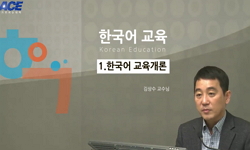Current elementary school English education in Korea places a heavy emphasis on oral language instruction, while middle-school English instruction mostly stresses written language, particularly reading and grammar. This incongruity can cause an imbala...
http://chineseinput.net/에서 pinyin(병음)방식으로 중국어를 변환할 수 있습니다.
변환된 중국어를 복사하여 사용하시면 됩니다.
- 中文 을 입력하시려면 zhongwen을 입력하시고 space를누르시면됩니다.
- 北京 을 입력하시려면 beijing을 입력하시고 space를 누르시면 됩니다.

Playwriting, a Strategy for Foreign Language Education = Playwriting, a Strategy for Foreign Language Education
한글로보기https://www.riss.kr/link?id=A100032558
- 저자
- 발행기관
- 학술지명
- 권호사항
-
발행연도
2014
-
작성언어
-
- 주제어
-
KDC
800
-
등재정보
KCI등재
-
자료형태
학술저널
-
수록면
495-518(24쪽)
- 제공처
-
0
상세조회 -
0
다운로드
부가정보
다국어 초록 (Multilingual Abstract)
Current elementary school English education in Korea places a heavy emphasis on oral language instruction, while middle-school English instruction mostly stresses written language, particularly reading and grammar. This incongruity can cause an imbalance in students’ linguistic development, leads to difficulties in adjusting to the new academic curriculum, and result in a loss of academic motivation. I therefore propose playwriting, an activity in educational drama in which learners perform the scripts they write, as an effective teaching tool to balance and bridge gaps between the Korean elementary- and middle-school English-language classroom. Playwriting can begin with a few lines of situational dialogues and then expand to a one scene/act play, a lengthier drama. While playwriting has originally been advocated in English language arts courses for native English speakers, this paper applies previous studies by educational drama scholars to foreign-language acquisition. Drawing specifically on students`` composition samples, three major issues which instructors can confront when applying the playwriting activity in a foreign language class are examined to propose a model for customizing playwriting for the foreign-language classroom. Issues discussed include: when to conduct the playwriting activity, what kind of source materials to use, and how to determine the level of instructor``s involvement. Equipped with this knowledge of drama methodology, I hope that Korean elementary- and middle-school English instructors can better utilize creative drama in the English classroom.(William Paterson University)
동일학술지(권/호) 다른 논문
-
독자 반응 기반 그림책 리텔링 지도 모형 개발: 읽기,말하기 중심으로
- 한국현대영어영문학회
- 고아라 ( A Ra Ko )
- 2014
- KCI등재
-
독해와 듣기로 부분 통합된 대학 교양영어의 학습효과 분석
- 한국현대영어영문학회
- 김달중 ( Dal Joong Kim )
- 2014
- KCI등재
-
- 한국현대영어영문학회
- 김선희 ( Sun Hee Kim )
- 2014
- KCI등재
-
- 한국현대영어영문학회
- 김순배 ( Soon Bae Kim )
- 2014
- KCI등재




 KISS
KISS




